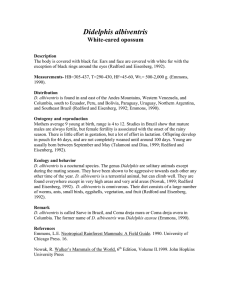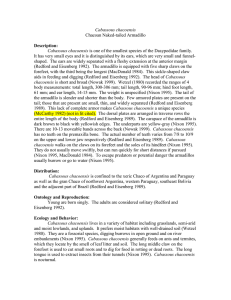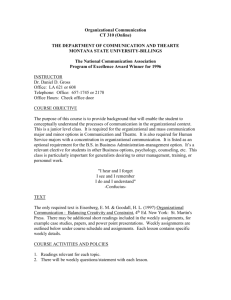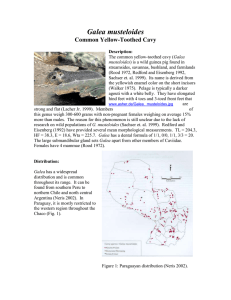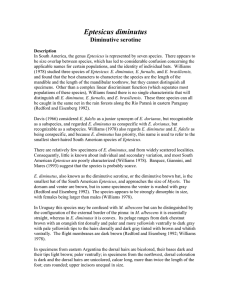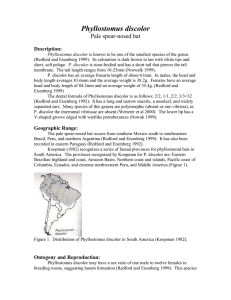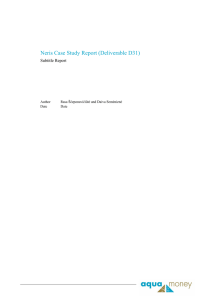Description
advertisement
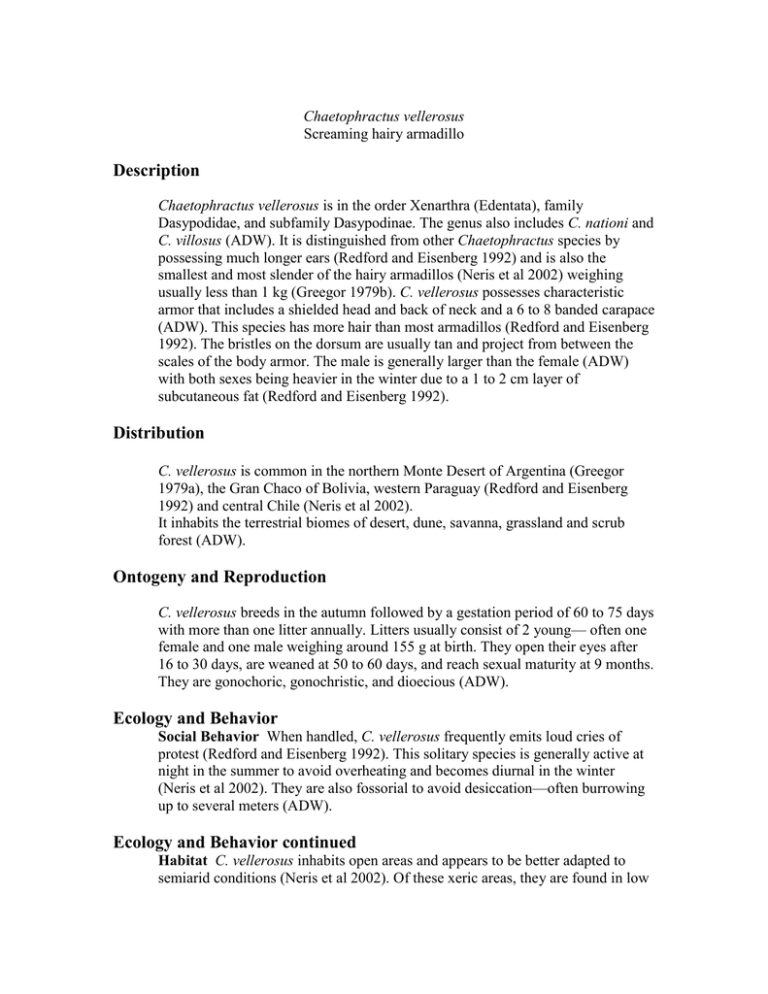
Chaetophractus vellerosus Screaming hairy armadillo Description Chaetophractus vellerosus is in the order Xenarthra (Edentata), family Dasypodidae, and subfamily Dasypodinae. The genus also includes C. nationi and C. villosus (ADW). It is distinguished from other Chaetophractus species by possessing much longer ears (Redford and Eisenberg 1992) and is also the smallest and most slender of the hairy armadillos (Neris et al 2002) weighing usually less than 1 kg (Greegor 1979b). C. vellerosus possesses characteristic armor that includes a shielded head and back of neck and a 6 to 8 banded carapace (ADW). This species has more hair than most armadillos (Redford and Eisenberg 1992). The bristles on the dorsum are usually tan and project from between the scales of the body armor. The male is generally larger than the female (ADW) with both sexes being heavier in the winter due to a 1 to 2 cm layer of subcutaneous fat (Redford and Eisenberg 1992). Distribution C. vellerosus is common in the northern Monte Desert of Argentina (Greegor 1979a), the Gran Chaco of Bolivia, western Paraguay (Redford and Eisenberg 1992) and central Chile (Neris et al 2002). It inhabits the terrestrial biomes of desert, dune, savanna, grassland and scrub forest (ADW). Ontogeny and Reproduction C. vellerosus breeds in the autumn followed by a gestation period of 60 to 75 days with more than one litter annually. Litters usually consist of 2 young— often one female and one male weighing around 155 g at birth. They open their eyes after 16 to 30 days, are weaned at 50 to 60 days, and reach sexual maturity at 9 months. They are gonochoric, gonochristic, and dioecious (ADW). Ecology and Behavior Social Behavior When handled, C. vellerosus frequently emits loud cries of protest (Redford and Eisenberg 1992). This solitary species is generally active at night in the summer to avoid overheating and becomes diurnal in the winter (Neris et al 2002). They are also fossorial to avoid desiccation—often burrowing up to several meters (ADW). Ecology and Behavior continued Habitat C. vellerosus inhabits open areas and appears to be better adapted to semiarid conditions (Neris et al 2002). Of these xeric areas, they are found in low to high altitudes, but are not found in rocky soils where burrow construction is impeded. Rainfall in their range is between 200 and 600 mm, but a population exists in eastern Buenos Aires province, Argentina where the annual rainfall is 1000 mm. They create sloping burrows with diameters ranging from 8 to 15 cm, several meters long, may have multiple entrances, and are often at the base of shrubs. No nest is apparently built in the burrow, and the entrance is usually sealed when the animal is inside (Redford and Eisenberg 1992). The minimum home range among 7 C. vellerosus tracked with trailing devices was 3.4 ha (Greegor 1979b). Diet C. vellerosus spends the majority of its time outside the burrow foraging. Their diet varies seasonally. During the summer, their major food item is insects, mostly from the beetle family (ADW). In the winter, their diet is mainly plant material, especially pods from the Prosopis tree. A significant part of their diet is vertebrates (28% in the summer and 14% in the winter) including anurans, lizards, birds and mice (Redford and Eisenberg 1992; Greegor 1979a). C. vellerosus also ingests a large amount of sand while foraging. Sand can compose 50% of the volume of a single stomach (Greegor 1979a; Redford and Eisenberg 1992). They also feed on garbage and animal carcasses (Neris et al 2002). This species has the capacity to go for long periods without drinking water because they have a very efficient kidney (Greegor 1979a) that can generate highly concentrated urine (ADW) and the capacity to use moisture from plant material eaten (Greegor 1979a). C. vellerosus is common in the distribution area (Neris et al 2002). Remarks C. vellerosus is common in the distribution area (Neris et al 2002). Indigenous people consume their meat, but farmers do not because of their necrophagaic habits (Neris et al 2002). Literature Cited Greegor Jr., D. H. 1979(a). Diet of the little hairy armadillo, Chaetophractus vellerosus, of northwestern Argentina. Journal of Mammalogy. 61(2):331-333. Greegor Jr., D. H. 1979(b). Preliminary study of movements and home range of the armadillo, Chaetophractus vellerosus. Journal of Mammalogy. 61(2):334-335. Neris, N., F. Colmán, E. Ovelar, N. Sukigara and N. Ishii. 2002. Kato’s Data Book on Larger Mammals of Paraguay: Distribution, Population Trends and Utilization. Secretaria del Ambiente. Porrett, M. 1999. "Chaetophractus vellerosus" (On-line), Animal Diversity Web. Accessed October 27, 2004 at http://animaldiversity.ummz.umich.edu/site/accounts/information/Chaetophractus _vellerosus.html. Redford, K.H. and J.F. Eisenberg. 1992. Mammals of the Neotropics: The southern cone, Volume 2 (Chile, Argentina, Uruguay, Paraguay). University of Chicago Press. Reference written by Mags Edwards, Biology 378 student. Edited by Christopher Yahnke. Page last updated.
